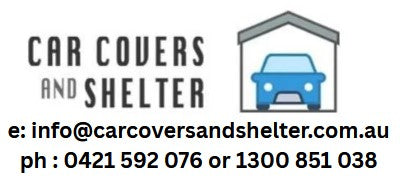
Guide to Buying and Using Car Covers
Share
Guide to Buying and Using Car Covers
The following Guide to Buying and Using Car Covers is from a Canadian Insurer. They are interested in making sure that their client's vehicles are stored well (they don't want claims!). Their great advice is good for Australians who also want to look after their cars. The original article can be found here.
Buy Car Covers
If you’re storing your car for winter, a quality car cover can be a great way to protect its exterior. Car covers protect your car from getting dirty, scratched, or rusty. Here are several considerations to take into account. This will help determine which car cover works best for your vehicle. It also shows how to get the most out of it.

Indoor Vs. Outdoor Car Covers
If you plan on parking your car outdoors for the winter, you need to understand the effect the weather conditions will have. The winter months can accelerate the wear process. Ice that is left on a car’s surface for extended periods of time can cause dents and scratches. If you’re storing your car indoors, a lightweight car cover made of woven polyester or a poly-cotton blend may be sufficient to protect against dust build up.
Custom Vs. Universal Car Covers - Guide to Buying and Using Car Covers
Universal covers are made for the average car, so they will fit your car’s approximate size but won’t have designated pockets or holes for your mirrors or antenna or any of your car’s unique features. A car cover that is too baggy may be less resistant to the elements, and one that is too tight may put stress on the body and be difficult to put on and take off. A custom car cover is your best bet. Like a tailor-made suit, custom car covers hug every part of your vehicle. They’re made specifically for the year, make, model and style of the vehicle it was purchased for. They last longer than universal covers, and are available in a various range of materials.
Applying Your Car Cover
If your car cover comes with mirror pockets (most custom fit patterns do), it’s important that they be placed over the side mirrors before the cover is stretched over the bumpers. Next, identify the front and rear of the cover (the front will be market front, and the rear has a loop sewn into the hem). Hook the loop around the licence plate or inside the boot. Cover your vehicle front back to front, securing firmly over the front and rear bumpers. Secure if with grommets if included with your car cover. To un-install, reverse the process and unroll the cover back along the car and fold down the sides.
Car Cover Cleansing & Maintenance - Guide to Buying and Using Car Covers
The performance of your car cover can be compromised if it becomes dirty. Cleaning properly when necessary helps to extend its life. Instructions vary depending on which fabric your car cover is made of, but generally, car covers are best spot cleaned with soapy water using a mild detergent and cool or lukewarm water. Using fabric softener, or drying any type of specialty cover in a dryer is NOT recommended. High quality car cover can be a helpful accessory to preserve your vehicle’s appearance but it’s not enough to ensure it’s full protection. Even if it is dormant for months at a time, insuring your vehicle with the right coverage is the most important measure you can take. Before winter sets in, make sure you’ve got the right coverage.

1 comment
Wonderful article, very important, keep it upmoturatna